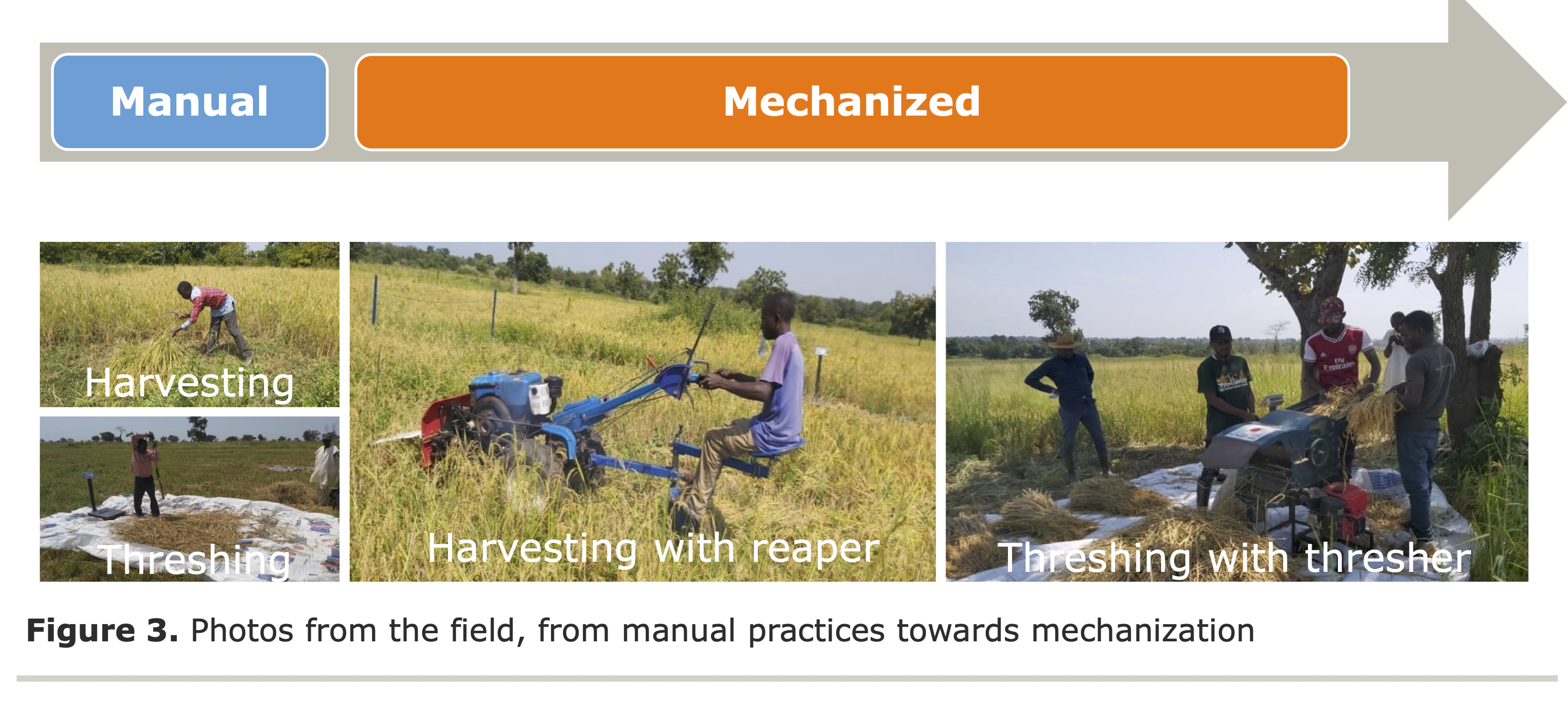Mechanization Helps Nigerian Rice Farmers
By:
Axmann H., Soethoudt H., Castelein B., Kok M., & Broeze J.
Wageningen University and ResearchBackground
Nigeria is Africa’s largest producer of rice. Rice plays a pivotal role for Nigeria’s food security. Nevertheless, the country still depends heavily on rice importations. Production methods are traditional with a low-level of mechanization and high inefficiencies. It was measured that as much as ~35% of the harvested rice is lost from harvest at smallholder rice farms till the gates of the collection centres. Losses represent a climate threat. Food loss and waste reduction has been identified as the most impactful solution to reduce the excess of greenhouse gases in our atmosphere. Worldwide rice accounts for as much as ~ 10% of the food loss and waste induced Greenhouse Gas emissions (GHGe) and it therefore is a hotspot product. Harvesting and threshing are detected as stages in the supply chain with the highest losses. In this study we assessed whether the introduction of mechanization is an impactful intervention for loss- and GHGe reduction.

Objective
The goal of this study is to analyse the impact of switching to mechanization on food loss, farmer profit, GHGe, and labour hours. Results should lead to research-informed knowledge, guiding the industry and the relevant stakeholders to effectively scale transitions pathways for profitable and climate smart food loss reduction interventions in smallholder rice systems.
Approach

Results & Discussion
Annually almost one ton (920 kg) food loss reduction of rice can be achieved per farmer/year, equivalent to approximately 14 % of the yield. Mechanization is thereby increasing farmers income by approximately US$ 400 per farmer/year. Moreover, the introduction of mechanization can avoid GHGe per unit food available for consumption, equivalent to ~ 3.3 ton CO2-eq. production-related GHGe per farmer/year. This includes effects of fuel use of the reaper and thresher. Moreover, introduction of mechanization can save about 200 labour hours ha-1 year-1. The upfront cost from mechanization are ~US$ 3,000. The challenge is to overcome those investments.

Conclusions
Introducing mechanized harvesting combined with mechanized threshing is the optimal scenario. Reducing losses by investing in mechanization provides an attractive return of investment, and has a positive climate impact. As policy advice, mechanization should be part of agricultural development strategies to improve food security and farmers’ incomes and to effectively reduce the climate impact of the hotspot product rice.

Acknowledgements
This work was implemented as part of the CGIAR Research Program on Climate Change, Agriculture and Food Security (CCAFS), which is carried out with support from the CGIAR Trust Fund and through bilateral funding agreements. For details, please visit https://ccafs.cgiar.org/donors. This work was furthermore supported by the US Foundation for Food and Agriculture Research under award number Grant ID: DFs-18-0000000008 and by the Rockefeller Foundation under award number 2018 FOD 004. Next to the financial support by CCAFS and The US Foundation for Food and Agriculture Research, Olam International supported data collection for this study, which was conducted by Olam staff on Olam contract farms.
The views expressed in this document cannot be taken to reflect the official opinions of these organizations. Data analysis, interpretation, and reporting were conducted by the study’s authors independently from any funding organization.
Contact Address:
Wageningen University & Research
P.O. Box 123, 6700 AB Wageningen
